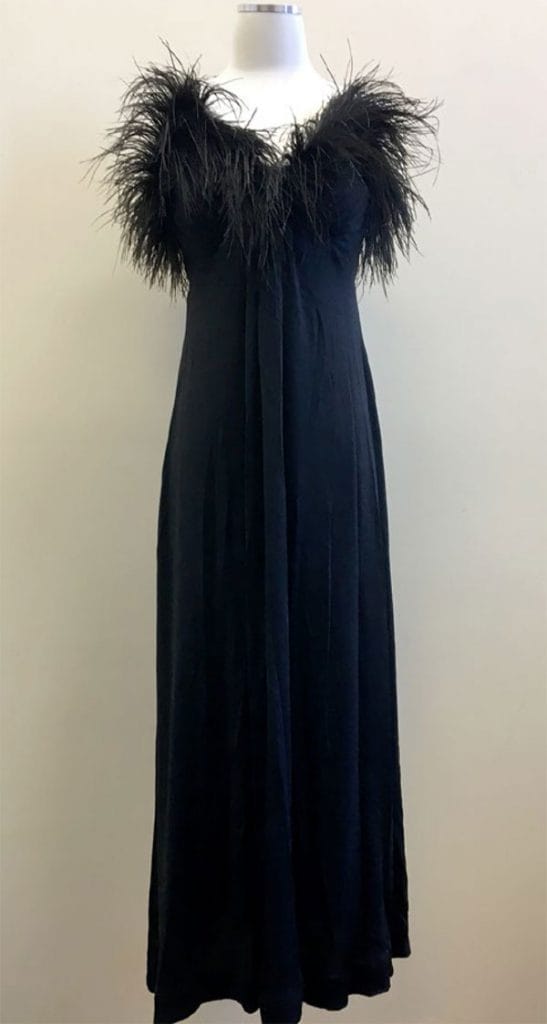How does fashion reflect social and cultural values? The Washington State History Museum creatively connects clothing and social constructs through the story of the quintessential “little black dress.”
“LBD: Little Black Dress, A Fashion Evolution” fills a large gallery with a timeline of deeply hued garments from the mid-1800s through the early 21st century. Each dress is shown with other material culture of its time, such as a work of art, a clock, a vase, or a chair.
The exhibit begins with black dressing as socially conscripted mourning attire. Moving into the mid-1920s, American Vogue revealed Gabrielle “Coco” Chanel’s first iconic illustration of the little black dress. It was described as “the Ford,” playing on Henry Ford’s statement about the Model T: “available in any color—so long as it’s black.”
Toward the end are 1990s minimalist styles led by designers such as Calvin Klein, Giorgio Armani and Nicole Miller. Of course there’s also a nod to Washington state’s famous contribution to the fashion world: grunge, which popularized thrift-store shopping.
You’ll see that dress styles and construction often mirrored social standards and perceived norms for women. As ideas about women’s roles changed, so did style, fabric and function in fashion. The results could either reinforce cultural norms or work to define countercultural movements.
How women dress has also been influenced by historical events and key individuals. Prohibition ushered in the first known cocktail dresses. Pants became more commonplace as women entered the workforce during World War II. Celebrities like Audrey Hepburn, Jackie Kennedy and Madonna were fashion trendsetters.
In 2019 the little black dress remains as versatile as ever. Today’s evolution is not in what we wear as much as how we shop. Online options can result in a personalized, accessorized ensemble delivered to your front door. Indeed, the internet offers more shopping options than ever.
Now that is a fashion revolution.
Don’t miss the Little Black Dress exhibition at the Washington State History Museum, Aug. 31 through Dec. 1, 2019.
JULIANNA VERBOORT
Washington State History Museum
washingtonhistory.org
